Infiniti drives towards self-discovery with the ‘Q Inspiration’ concept car
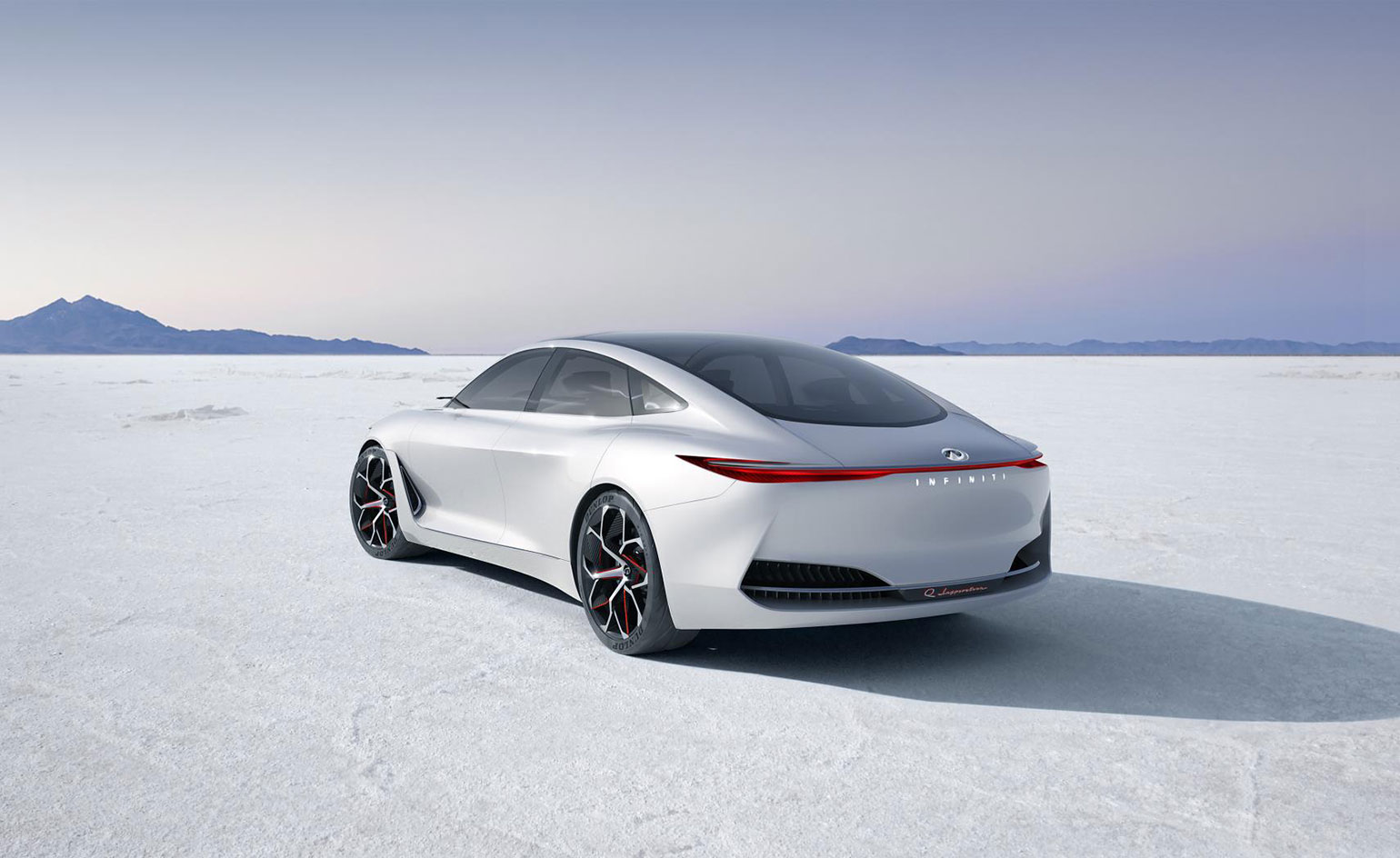
Infiniti is on a mission to find a distinctive voice, and the company’s new Q Inspiration concept is an expression of this. Presented last month at the North American International Auto Show, the study car is rich with references to the future of the Japanese marque. Despite recognition in the US and throughout Asia, Infiniti – Nissan’s premium arm – is somewhat misunderstood in Europe. Q, and the production cars that follow, may change our perception.
The concept car proposes an unconventional design theme that breaks away from the usual three-box saloon style; it explores a human-focused interior inspired by elements of Japan and looks at Infiniti in the ever-advancing age of clean autonomous driving. The project was led by Karim Habib, who from his base in Atsugi, Japan leads Infiniti’s design teams in Beijing, San Diego and London.
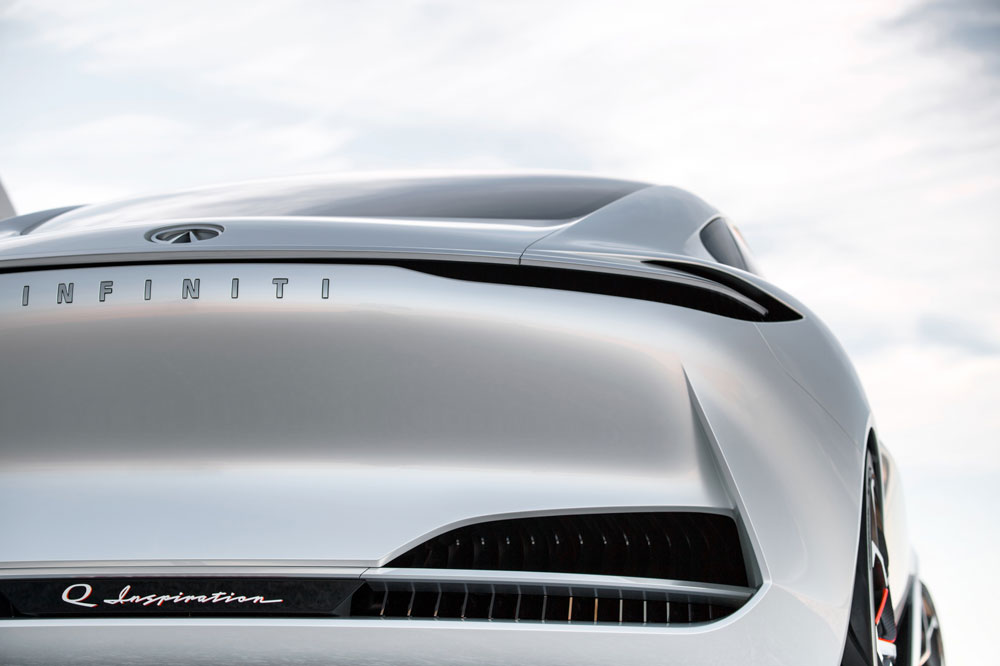
An advanced VC-Turbo engine powers the car
Discussions over project Q had already begun before Habib joined the company in July. A clay model had been conceived to explore the coupé proportions, the shorter hood and elongated body. ‘I had never worked on these proportions,’ he begins. ‘I wanted to challenge myself – explore a different kind of elegance. So, I started on the surfaces, the volumes and graphics. The idea was to keep a simple and clear design that is also a bold product.’
Infiniti’s advanced VC-Turbo engine powers the car. Habib says this shift towards more compact and less intrusive powertrains liberated his team to work with alternative forms ‘with flowing gestures, more engaging in character and more enriching in experience’, he says. ‘It heralds in a new era for Infiniti models.’
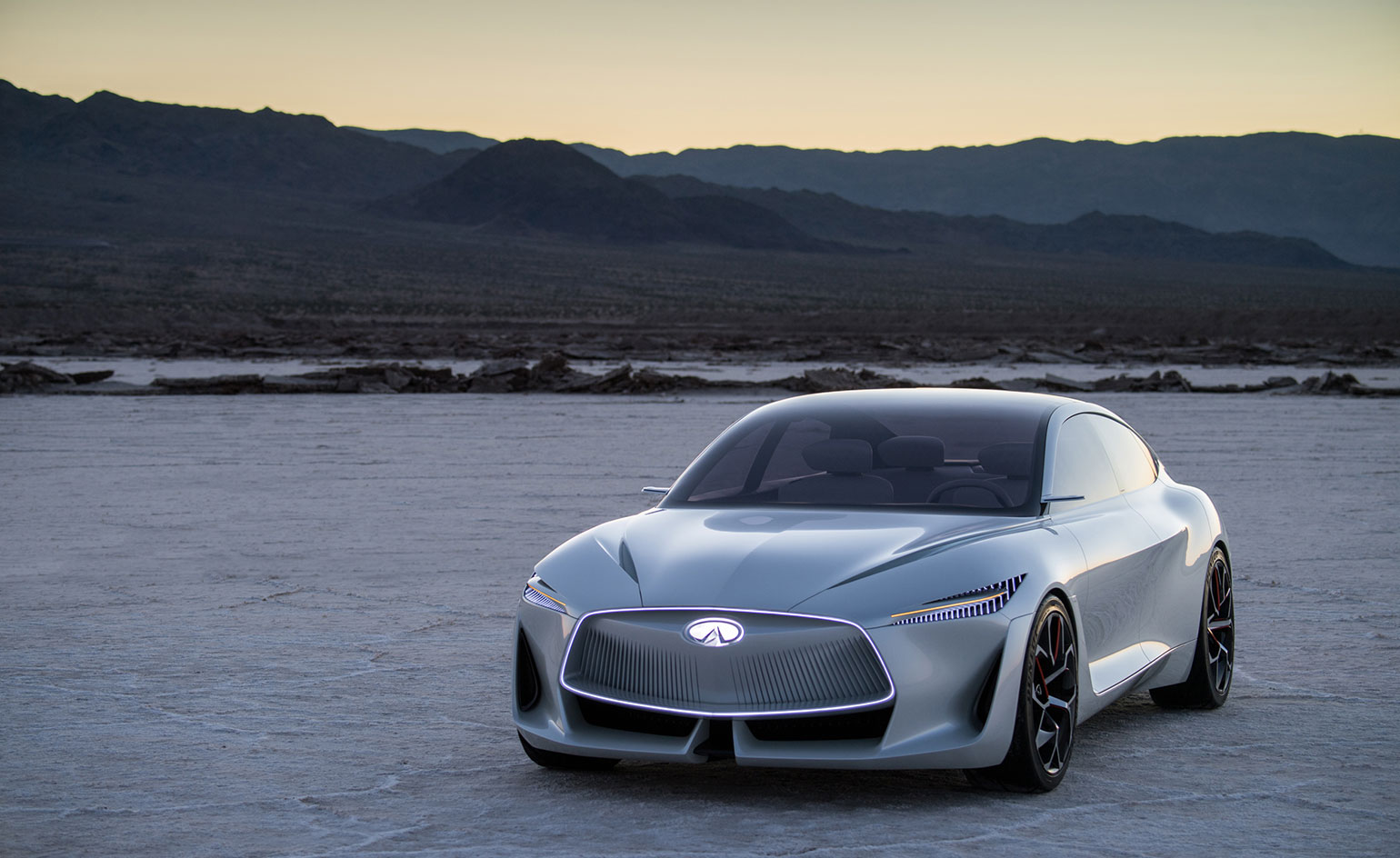
The front grille is framed by striped LED lights
There are some exciting ideas being explored here too, such as the prominent front grille framed by striped LED lights. Habib offers in explanation: ‘With the headlamps we avoided playing with animation and jewellery. Instead it is about emulating the concept of Japanese restraint.’
Then the light design is supposed to pull the viewer in like an infinite mirror. ‘In terms of production, this is too advanced but the idea of these infinite mirrors is something we would like to develop.’ The grille design opens and closes depending on how much air the car needs to cool the engine. ‘We have a chance to explore the air intake as we head towards e-power with our cars.’
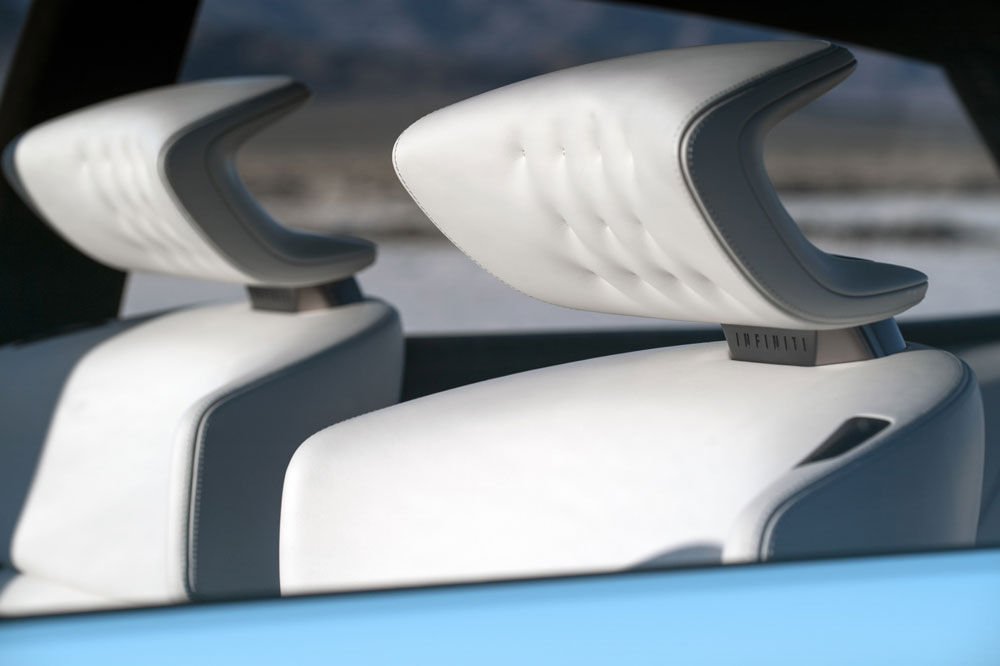
Each passenger sits on slim seats in their own unit
The absence of a conventional B-pillar here – every car designer’s dream but tricky to produce – and rear-hinged rear doors help create a wide, open space where each of the four passengers sit on slim seats in their own unit replete with individual floating touchscreen. Habib conducted the design process much like an architect, imaging the interior space around the movement of occupants. ‘We are trying to create a new design philosophy based on people and experience. Here it is about maximising the space for the feeling of wellbeing – a sanctuary.’
The compact engine also enabled the team to conceive a flat interior floor which, together with the minimal fully-digital dashboard, resulted in a vast empty space. ‘Our first reflex was to fill it up, but then we realised we had a chance to work with these empty and negative spaces.’ For instance, the centre console appears to be floating with the thin layer above highlighting the empty space below. Elsewhere, the floating armrest brings the empty space below to the forefront. This concept is rooted in Japan, he says. ‘I am particularly inspired by the residential architecture in Tokyo, and the use of small spaces, and negative space.’
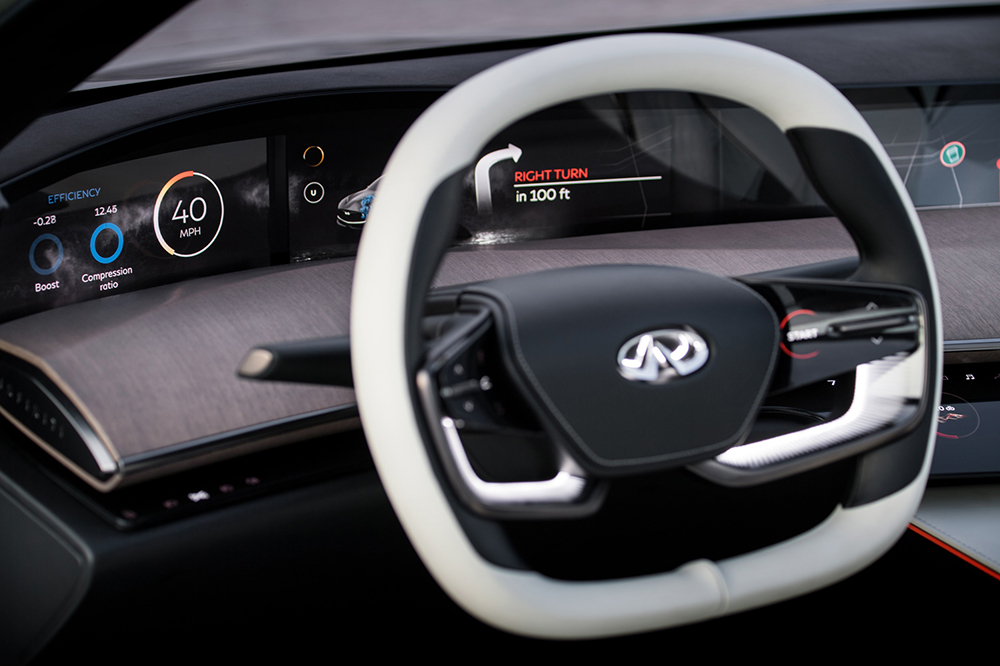
The dashboard is minimal and fully digital
Until his relocation to Japan last summer, Habib, a Canadian of Lebanese descent, had been living in Munich where he was chief designer at BMW responsible for many of the new models including the 7 Series. He admits his new environment is having a profound impact on his sensibility. ‘I’m being inspired by my daily surprises,’ he smiles. ‘It is my honeymoon phase and everything is so nourishing here.’
These include noticing new material applications that he would like to introduce to his cars. It feels right for a company like Infiniti to break away from conventional applications of luxury materials and Habib is aware of this. ‘To create the feeling of wellbeing we must work with warm materials – traditional or new,’ he says. ‘There are also certain materials that are clearly recognised as being Japanese and I’m excited to work with some of these ideas without being obvious.’ Straw, for instance, and the Japanese weave technique or burnt wood that is applied to the façade of certain buildings here to be more resistant to harsh weather. ‘It is fascinating to observe. The question is how to bring something like burnt wood into the car? It all has to make sense in an automotive setting.’
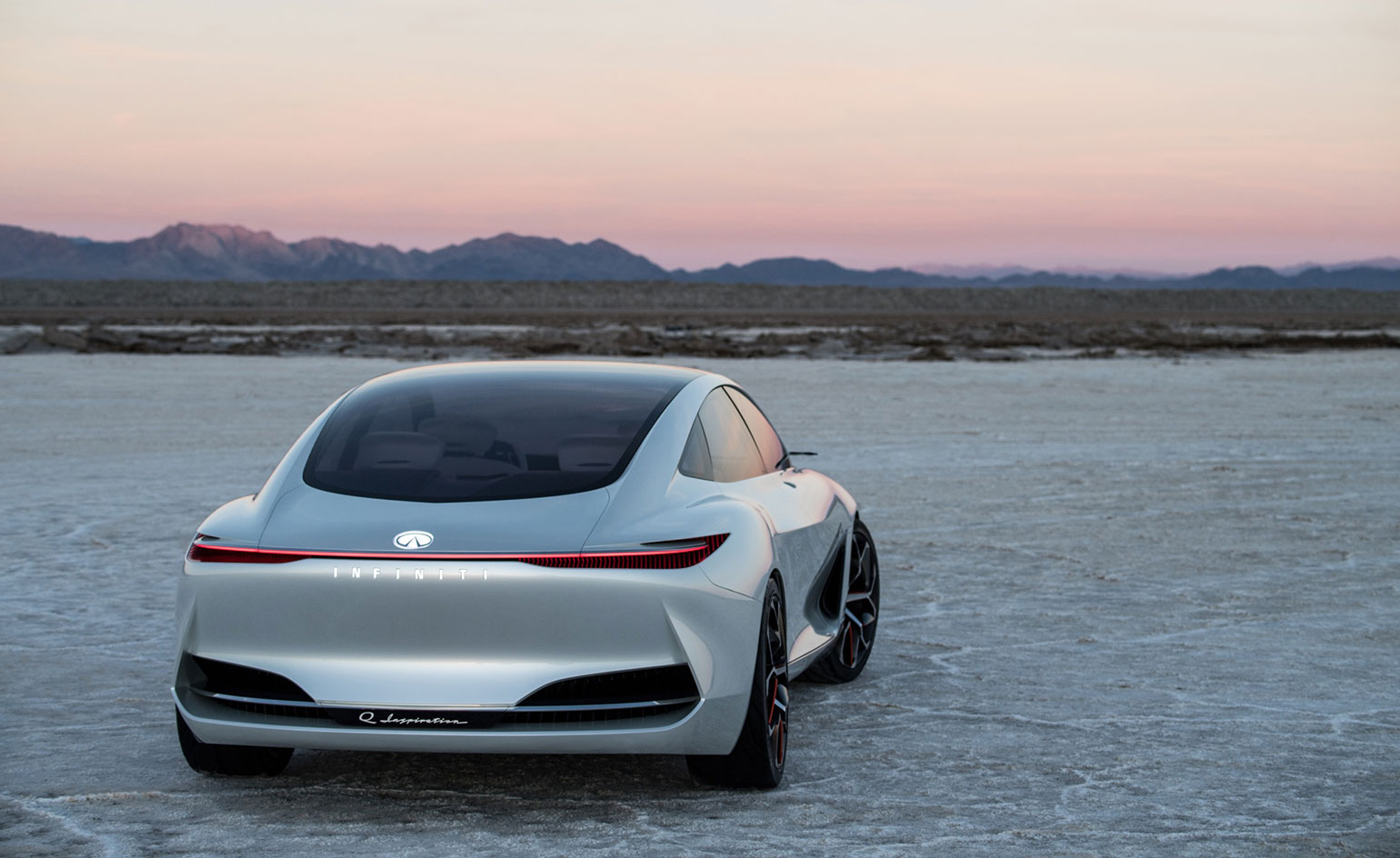
‘The idea is to create cars for people not just to make machines’ – Karim Habib
Habib admits after 17 years at BMW, he welcomed the move and was excited to be working on an entirely new brand, within a new culture ‘to take in the art, architecture, design and culture of another place.’ Unlike BMW, Infiniti is a youthful company with a short history that began in 1989 when Nissan started selling more premium models to US customers under a new badge. Now Infiniti is separately managed from Nissan, and exports to over 50 markets, with grand ambitions especially in China.
‘It is a fascinating brand with amazing highlights,’ says Habib. ‘With the first creation, the company used images of birds flying with a narrative that talked about the importance of building machines for humans and being inspired by nature. The idea is to create cars for people not just to make machines. This is what drives the brand.’
Some vehicle designs were particularly brave too. For instance, the first Q45 didn’t have a front grille and the FX45 was, in 2000, one of the first sporty shooting-brake SUVs on the market. ‘The designs were inconsistent, and there is no hiding this, but there are a lot of raw diamonds in the inconsistency,’ he says before adding, ‘Infiniti design is consistent now, but it still needs to be developed. My mission is to nourish the brand. It is about working across the visual inputs and outputs, the ads and dealerships. We participate in all these areas now. It is a lot of fun.’
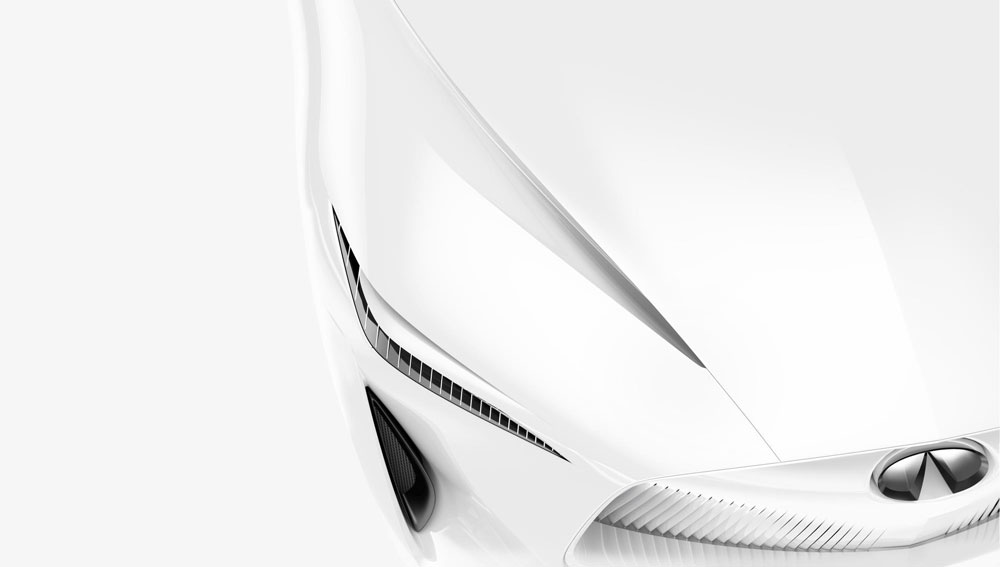
With its Japanese aesthetic, Q Inspiration intends to enrich the quality of life
In the future, Habib advises us to look out for a trio of concept cars that will reveal Infiniti’s evolution based on experiences. Whereas Q Inspiration is about enriching the quality of life with strong roots in Japanese aesthetic, the second concept car will look at how technology can make life easier. This will be followed by one that tackles the idea of engagement and driving pleasure, completing the evolution with the final concept of ‘enchanting - a poetic idea which we’re still finalising’.
Infiniti has also announced plans for a fully electric car by 2021 and a mix of electrified and hybrid e-Power family by 2025. ‘I am happy to be part of the journey,’ Habib adds. ‘I have been a car designer for over 20 years and as much as I love old classic cars, I like to bring the car as a product forward and make it relevant. My thoughts are that there is room for all types of vehicles. Driving around Tokyo in the week you see small utility cars, then on weekends Lamborghinis! These two extreme products can co-habit in society – each has its own purpose and this may indicate the future.’
Wallpaper* Newsletter
Receive our daily digest of inspiration, escapism and design stories from around the world direct to your inbox.
INFORMATION
For more information, visit the Infiniti website
A writer and editor based in London, Nargess contributes to various international publications on all aspects of culture. She is editorial director on Voices, a US publication on wine, and has authored a few lifestyle books, including The Life Negroni.
-
 All-In is the Paris-based label making full-force fashion for main character dressing
All-In is the Paris-based label making full-force fashion for main character dressingPart of our monthly Uprising series, Wallpaper* meets Benjamin Barron and Bror August Vestbø of All-In, the LVMH Prize-nominated label which bases its collections on a riotous cast of characters – real and imagined
By Orla Brennan
-
 Maserati joins forces with Giorgetti for a turbo-charged relationship
Maserati joins forces with Giorgetti for a turbo-charged relationshipAnnouncing their marriage during Milan Design Week, the brands unveiled a collection, a car and a long term commitment
By Hugo Macdonald
-
 Through an innovative new training program, Poltrona Frau aims to safeguard Italian craft
Through an innovative new training program, Poltrona Frau aims to safeguard Italian craftThe heritage furniture manufacturer is training a new generation of leather artisans
By Cristina Kiran Piotti
-
 Peugeot’s sparky 308 gets hybrid power and handsome lines
Peugeot’s sparky 308 gets hybrid power and handsome linesThe Peugeot 308 proves that mass-market design needn’t be dull, blending hybrid power with sharp lines and excellent detailing
By Jonathan Bell
-
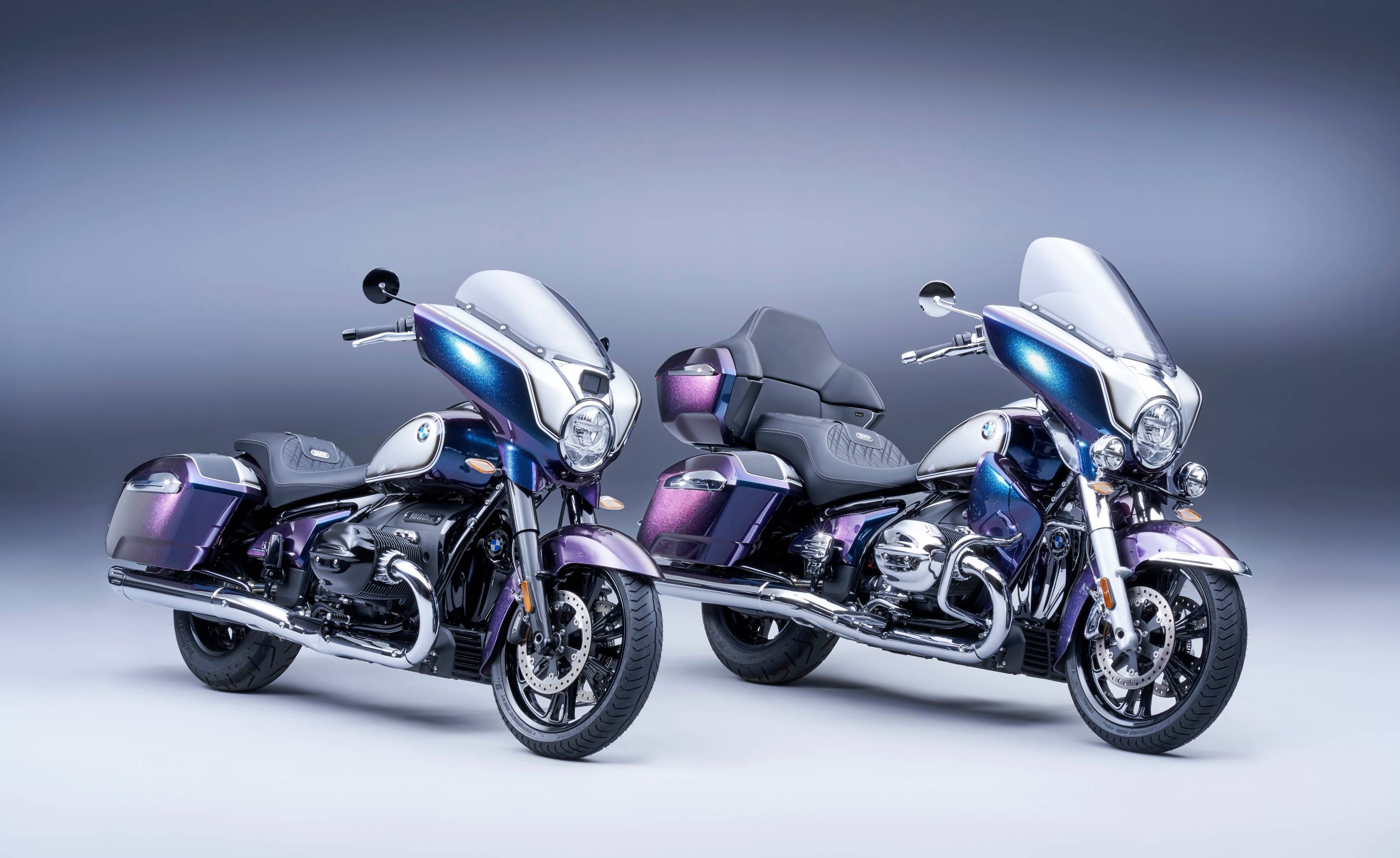 BMW Motorrad brings out the big guns for its newest cruisers
BMW Motorrad brings out the big guns for its newest cruisersBMW Motorrad R 18 Bagger and Transcontinental set the tone for high-voltage cruising with a brand collaboration with speaker specialist Marshall
By George Chapman
-
 Dacia’s new Manifesto concept is a true outdoor utility vehicle
Dacia’s new Manifesto concept is a true outdoor utility vehicleUtilitarian auto brand Dacia sets a bold new agenda with its Manifesto, a concept car pitched at the active outdoor market
By Jonathan Bell
-
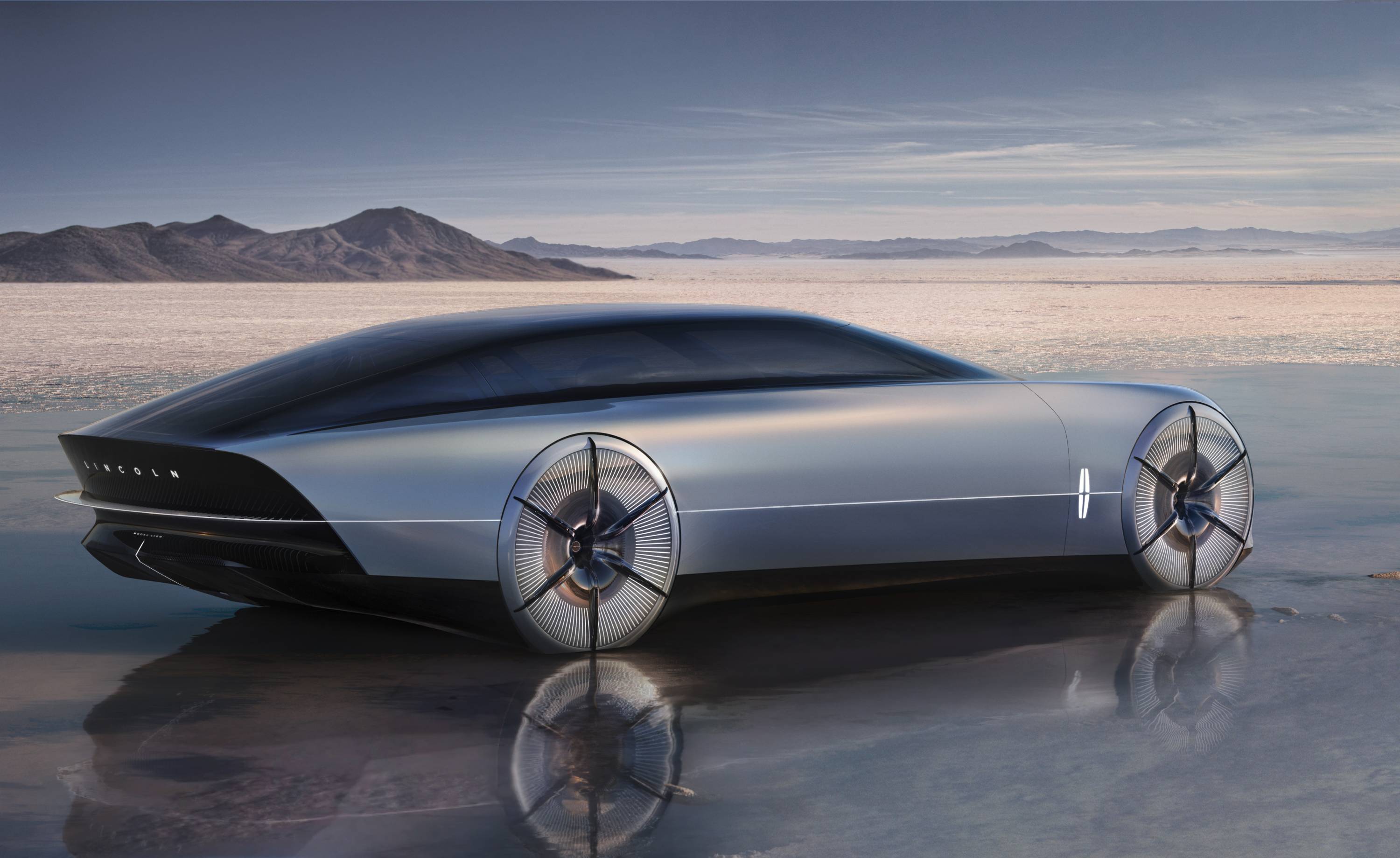 The sun sets on traditional supercars at California’s Monterey Car Week
The sun sets on traditional supercars at California’s Monterey Car WeekMonterey Car Week, the world’s most prestigious car gathering, is showcasing ever-more extravagant special editions, coachbuilt cars and all-new electric concepts. Here are seven key machines from 2022
By Rory FH Smith
-
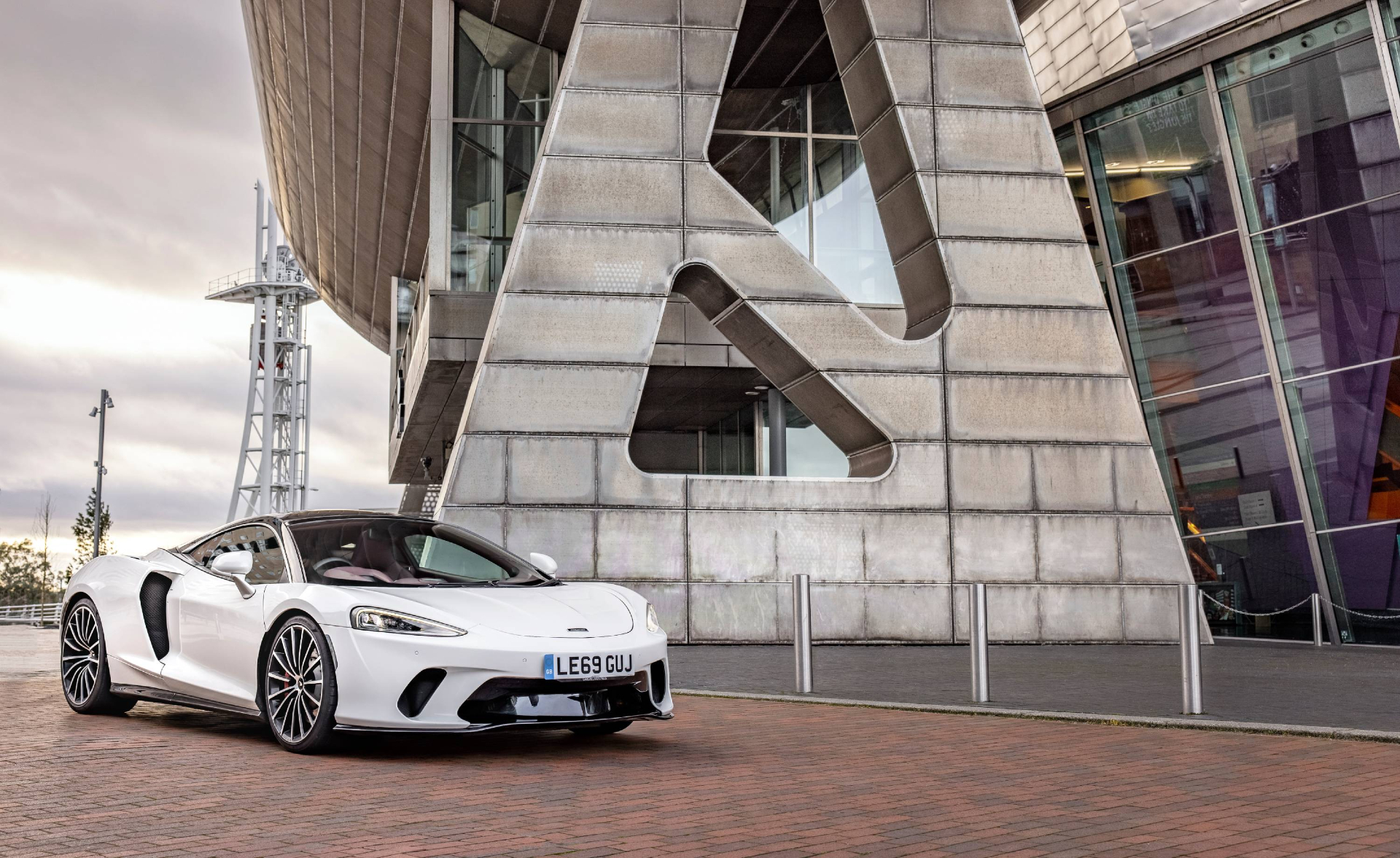 Is McLaren’s GT a sports car, a tourer, or the best of both?
Is McLaren’s GT a sports car, a tourer, or the best of both?The McLaren GT is a capable all-rounder dressed up in svelte supercar clothes. It might also be the last of its type
By Jonathan Bell
-
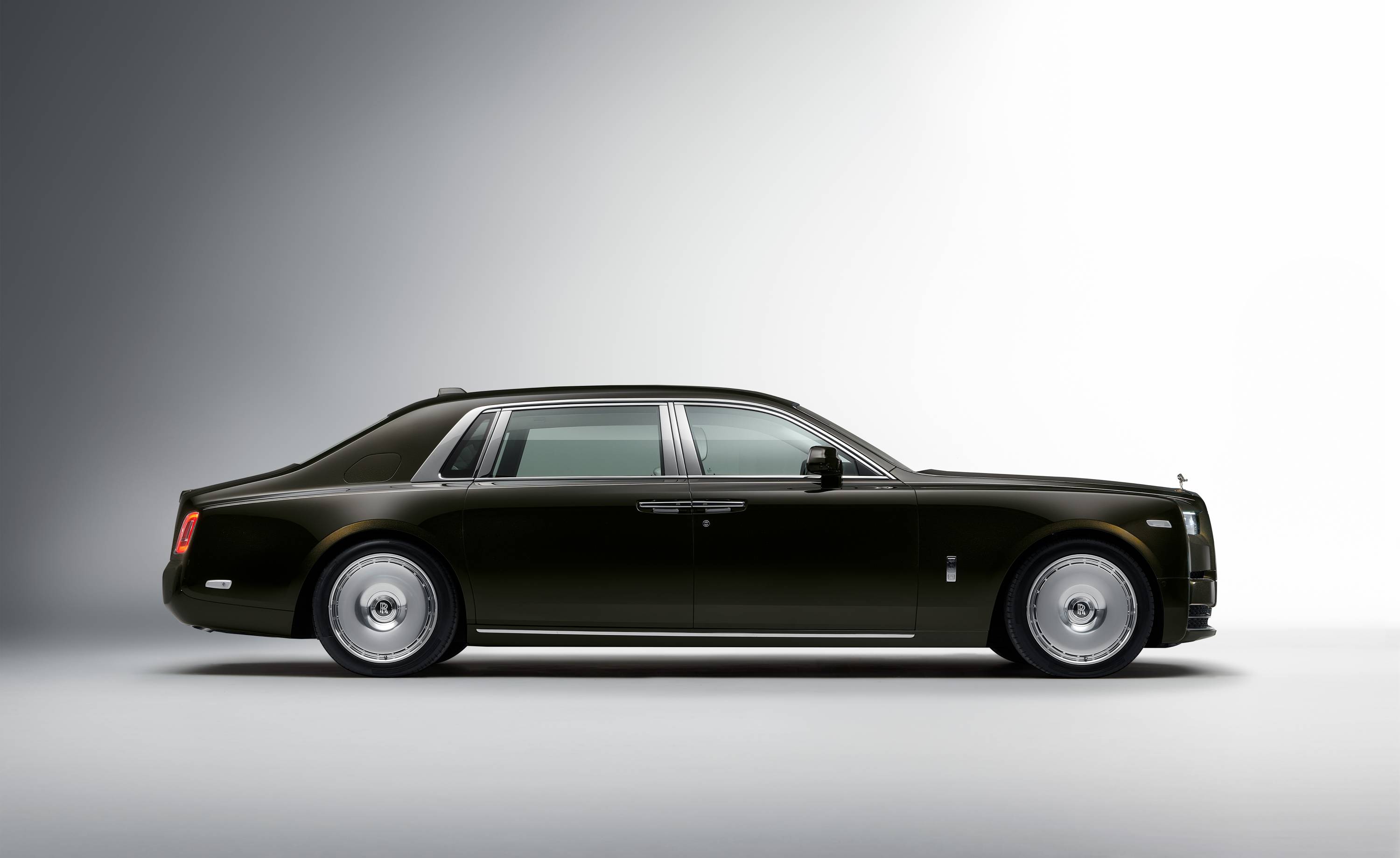 Rolls-Royce puts the Phantom back on its lofty pedestal
Rolls-Royce puts the Phantom back on its lofty pedestalA mid-life refresh ensures the flagship Rolls-Royce Phantom Series II is at the top of its game, a last hurrah for traditional engines before an electrified future
By Jonathan Bell
-
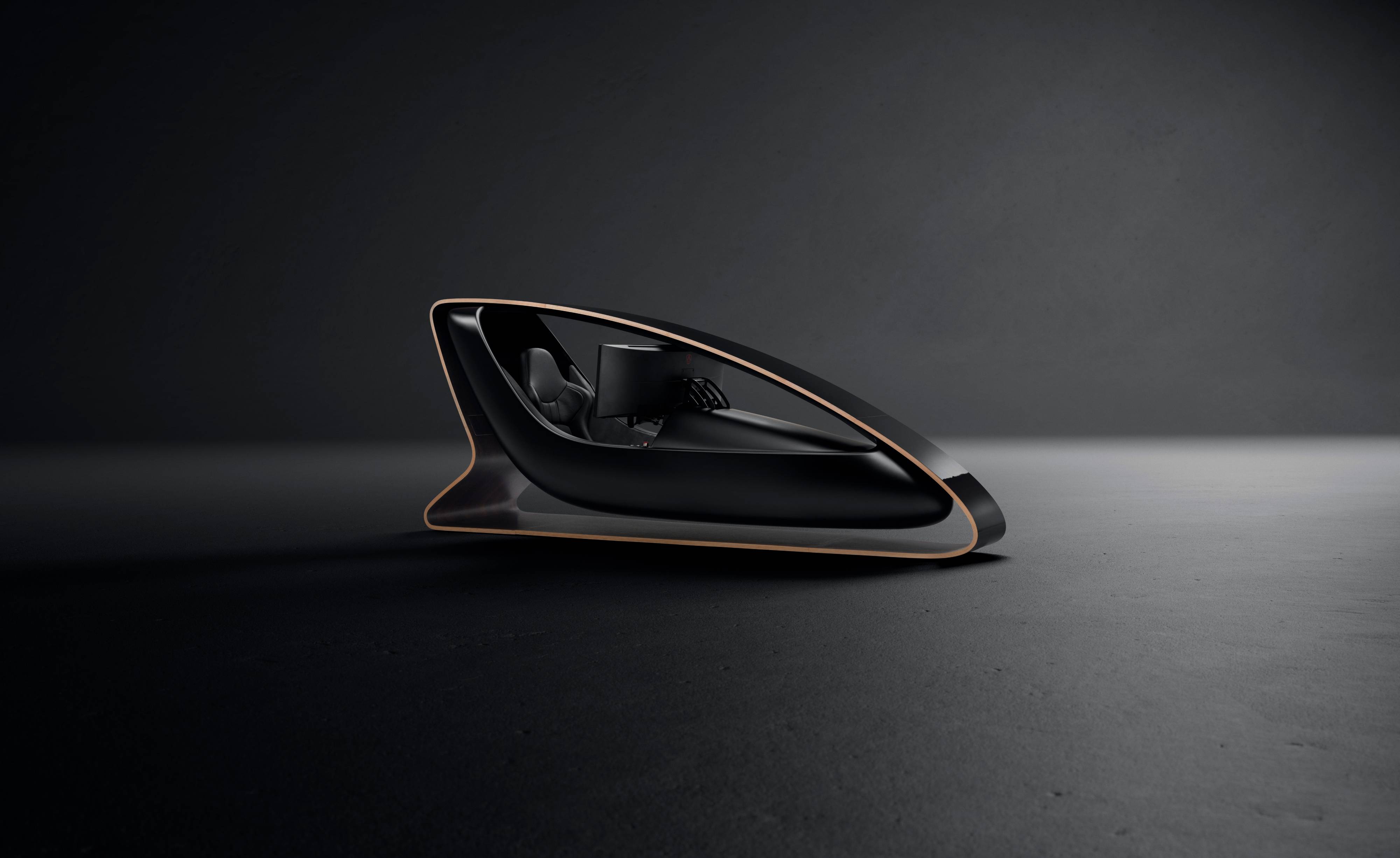 Prodrive’s new racing simulator is shaped by Callum to be front of the grid
Prodrive’s new racing simulator is shaped by Callum to be front of the gridThe racing simulator shapes up – this new design from Prodrive and Callum is honed for the high-end games room
By Jonathan Bell
-
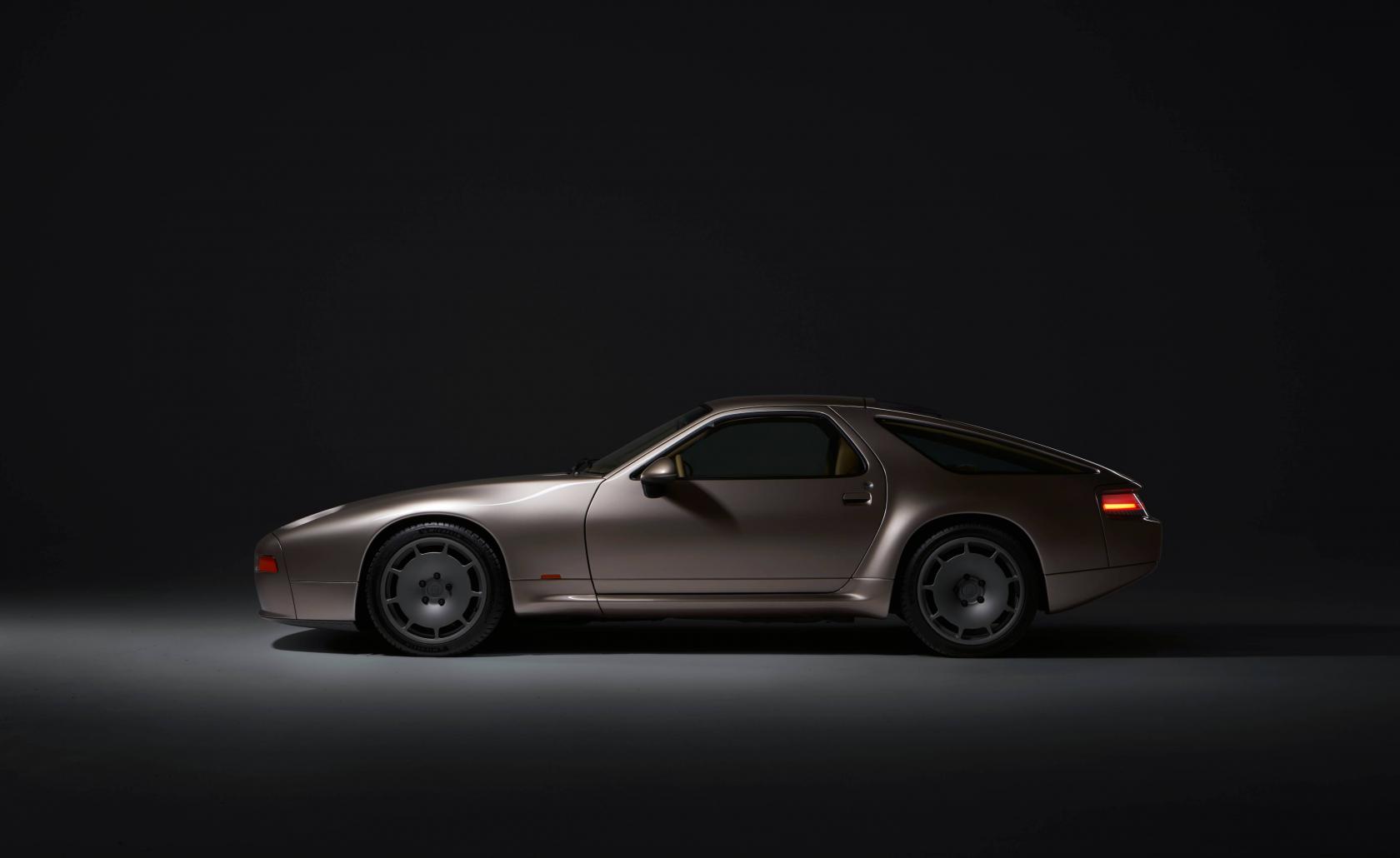 928 by Nardone Automotive: a restomod Porsche with Gallic verve and Italian style
928 by Nardone Automotive: a restomod Porsche with Gallic verve and Italian style928 by Nardone Automotive is a gracefully modernised version of Porsche’s endearingly different 928
By Jonathan Bell